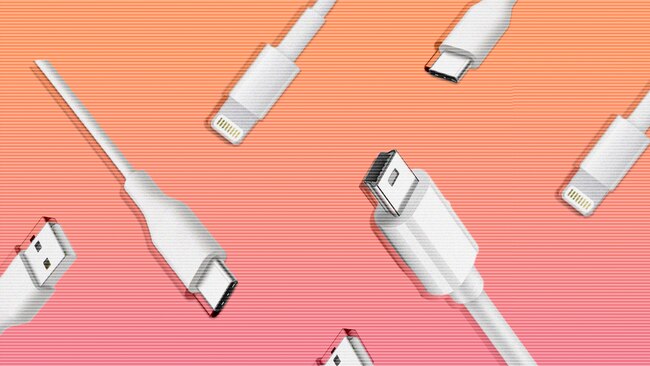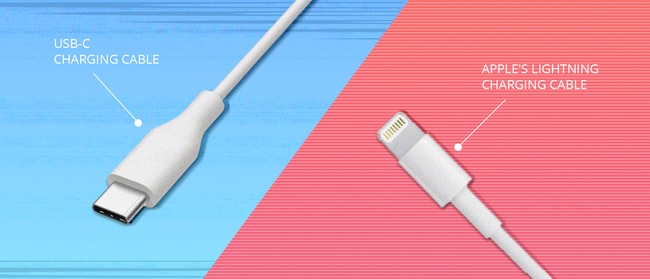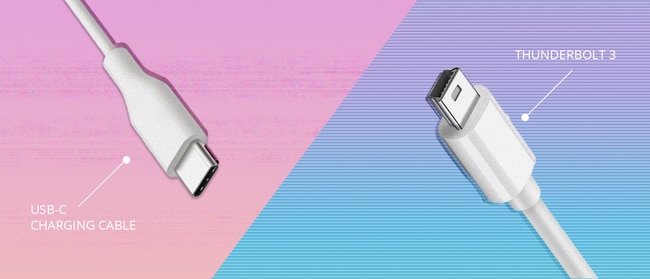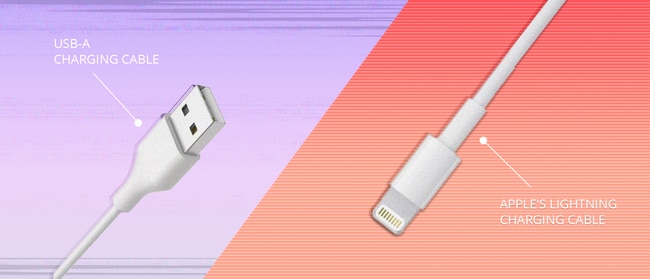Don't buy any more lightning chargers
Unless you really, really need them. No, Apple is not OK.

Unless you really, really need them. No, Apple is not OK.
There is a drawer in your home that hides a secret shame. It’s ok, we all have one. No, I’m not talking about that drawer, I’m talking about the drawer of Firewire cables and old chargers to long dead devices that you’re keeping “just in case”.
You might remember the trial that was trying to find the right phone charger at a high school party, when there were 30 different possible connectors. Thank goodness that malarky is mostly over. What you might not know is that you have the European Union to thank for that change, because they worked with tech companies on a “voluntary approach” to get them to reduce waste and inconvenience.
Last week the European Union proposed an update to the Radio Equipment Directive that would reduce the number of charging ports even further, and give you a reason to throw out the contents of that drawer.
What does this mean?
The European Union is going to make it so that, by 2024, all smartphones, tablets, cameras, headphones, portable speakers, and handheld video game consoles will need to use the standard USB-C charging port to be sold in Europe (with laptops joining in 2025/2026). It’s unlikely that companies will make a special European version of their devices, so that basically means the end of proprietary charging ports, most notably Apple’s iPhone Lightning port.

Folks already using headphones, Android phones, iPads, and laptops that use USB-C won’t really notice a difference. From a gaming perspective, it only applies to handheld gaming consoles, which is fine for Nintendo because the Switch already uses USB-C, and the Xbox Series X and Series S is fine with the damnable USB-A port because they’re not handheld.
Why is the European Union doing this?
Mostly to reduce e-waste, but also to reduce the barrier for consumers to switch brands and products whenever they want.
You’ve probably noticed all those “accept cookies” popups in the last few years, and that’s because the European Union has been on a consumer rights and digital privacy spree. The EU is trying to return some power to users of technology over the devices they own and the data they might not want to share.
Some people who are too invested in accessories for one type of phone might feel discouraged from changing to a device that might suit them better. This will reduce some of those barriers.
In a statement, the EU gave these two claims as the main reasons:
- “The new requirements will ultimately contribute to the reuse of chargers and help consumers to save €250 million a year on unnecessary charger purchases.”
- “The new measures are expected to generate environmental benefits by reducing greenhouse gas emissions of approximately 180 ktCO2e yearly and reducing e-waste by almost a thousand tonnes yearly. The unbundling of the external power supply contributes the most to these savings while helping to reduce the extraction of resources, manufacture, transport, use and disposal of the chargers.”
How has Apple responded?
The company is not happy. However, no one at Apple can say they’re surprised, and the company has been working towards this for years. iPads switched to USB-C charging ports in 2018, and even Beats headphones (which flirted with Lightning ports in 2018 and 2019) switched back to USB-C in the past few years.
In a statement last year, a spokesperson for Apple said “We remain concerned that strict regulation mandating just one type of connector stifles innovation rather than encouraging it, which in turn will harm consumers in Europe and around the world.” At the time they also said that the mandate would increase e-waste.
Is Apple right?
In a way, yes. But also no.
In the short term, this is likely to create more e-waste as people upgrade their phones and have to get new chargers. But a company on a 12-month upgrade cycle on devices that really could last much, much longer should probably get out of that glass house before throwing stones. Plus, in that equation, the cable is much less of an e-waste issue than the phone.
Also, isn’t this the company that seven years ago said that we all had to start using dongles because MacBooks would only use USB-C from now on? They’ve since reversed course on that ridiculous decision, but designer Jony Ive put them on shaky ground when it comes to this argument.
However, they do have a point on that innovation issue. When the European Union first started floating this idea years ago, they were looking at USB micro-B (aka micro-USB) connectors, those kinda half-moon looking things. USB-C/Thunderbolt 3 is leaps and bounds ahead of those ports because it allows information and power to flow at the same time from the one port at impressive speeds.

USB-C/Thunderbolt 3 is the best we can imagine now, but five years down the track it might seem as antiquated as micro-USB does now.
That said, it does give tech companies the challenge of innovating around the shape of USB-C. The very fact that USB-C and Thunderbolt 3 can share a port size and shape while not being fully interchangable shows that this is possible. It will become a problem if newer chargers and standards cannot be made backwards compatible without accidentally exploding something, but hopefully it doesn’t come to that.
The EU disagrees that this will hamper innovation, suggesting that the move towards wireless charging will be the next area for innovation. But wireless charging uses more power for the same result, and there’s already a bunch of different proprietary wireless chargers that will just create this problem anew, so it’s not a long-term solution.
When is this happening?
Not any time soon. It’s almost certain that this will become law, but the EU is giving manufacturers of portable devices 24 months and laptop makers 40 months, so you still have to keep your Lightning cables a bit longer. But maybe don’t buy any more unless you really need them.
Who is this not good for?
People who over-invested in Lighting Cables or USB-A power points. I especially feel for people who bought very, very expensive wired headphones with Lightning connectors.

Hopefully the EU can bring the 3.5mm headphone jack, but even they may lack powers of necromancy.
This will make things difficult for designers of items that need to be thin and use every mm of available space. USB-C plugs need to go in deep, and devices (like wireless headphones) don’t always have that space.
It’s also bad for people buying their first laptop, as the legislation “unbundles” the sale of chargers from devices. This is fine on phones and headphones (which has already become the norm, even though it often pushes people to buy third-party chargers that might not be safe), but laptop chargers are expensive and require specific wattages. Phones will generally use 15W (unless you want fast charging), so they’re pretty interchangeable. But a MacBook Air, for example, uses roughly a quarter of the power of a souped up gaming laptop, and not all chargers and laptops are able to regulate the amount of power they draw.
Is this good overall?
Broadly, yes. It’ll be nice to be able to use the one charging cable for all your devices and just have to bring different power bricks.
More personally, as someone who has a pair of headphones for every occasion, I have a drawer (separate to my general charger drawer) just for proprietary headphone charging cables. So many manufacturers of wireless headphones choose to use proprietary magnetic charging ports instead of making the body wide enough to support USB-C. It’s going to be great to know that future headphone acquisitions won’t mean yet another cable I have to try not to lose. I’m sure I’m not the only person who has at least half a dozen pairs of really good headphones I’ll never be able to use again because I lost the cable and no one sells them anymore.
This will also reduce e-waste, because it means you’re not going to have to throw out your charging cable collection when you change headphone or phone brands.


